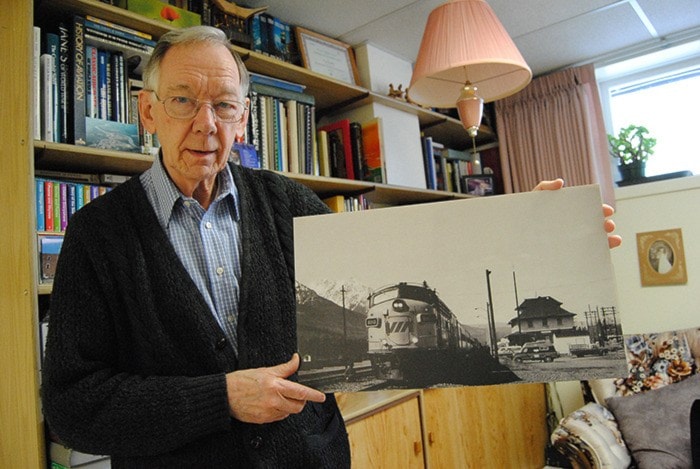Harry Kruisselbrink has lived in the Bulkley Valley for most of his life and has worked close to the railway for nearly as long.
He has compiled his experience and a large stack of research to make a revised version of a book he released in 2008, Smithers: A Railroad Town.
Kruisselbrink moved from Holland to Barrett, between Houston and Smithers, with his family shortly after the second world war.
Since then he has lived nearly his entire life in Smithers.
In 1955, one of his first jobs was to carry telegrams from the train station to locals and business owners and vice versa.
“When I was hired telegraph was communicated by Morse code,” he said.
“But within about six months teleprinters were brought to the Smithers CN station.”
The new technology made messaging quicker and business was able to expand in the valley.
“In those days we had a direct link with Vancouver,” Kruisselbrink said.
“We transmitted important communication like lumber orders and changes in fuel prices.”
Kruisselbrink was able to advance to communications technician after taking a few electrical and technical courses, the bulk of his work happened at the Smithers railway station.
Despite his long history working and being generally associated with the railway Kruisselbrink found he was entering uncharted territory when he sat down to write his first book.
“I realized my knowledge in the area was woefully inadequate,” he said.
Kruisselbrink continued researching the railway’s effect on Smithers after he spoke at an elder’s college at NWCC.
“That was in 2005 and I published the shorter version of this book in 2007.”
The book spans pre-European contact to the present day and tells the story of how the railroad enabled a town to be built and sustained in the shadow of Hudson Bay Mountain.
“Smithers was really an afterthought during the construction of the railway,” he said.
“It was initially conceived during the construction of the Collins overland telegraph line.”
By Sept. 1866 the telegraph line was operational in what is now known as the Bulkley Valley, named after Col. Charles S. Bulkley, engineer-in-chief of the telegraph project.
The first train passed through Smithers in 1913, but rail traffic was prevented from making it to Prince Rupert until 1914 when the Grand Trunk Pacific railway was completed.
There was no such town as Terrace at the time and Hazelton was the hub of trade due to paddle-wheel boats inability to make any further headway, Kruisselbrink said.
Once the railway was complete Smithers became more of a centre of commerce.
“This railway is still the finest railway in North America,” he said.
“It was built to a very high standard by Charles Hays because he was competing with the southern rail companies.
“Without people like Hays, Smithers would never have existed at all.”
